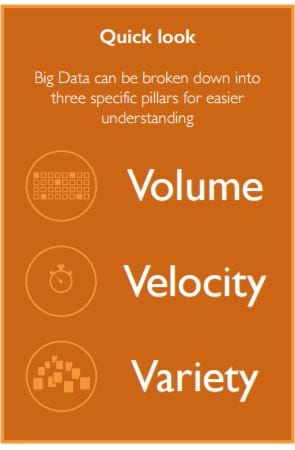How to make big data work for you
Often, the image surrounding Big Data focuses on how giant corporations can hoover up an extraordinary amount of information. Feeding it into powerful computers creating a stream of crucial analysis and insights, thus saving itself billions. Certainly a cliché, there are big companies harvesting incredibly large amounts of data, and achieving great results.
However, Big Data is not only for ‘big companies’. More and more small and medium-sized enterprises are capitalising on the advantages that Big Data gives their business processes.
By harnessing a large volume of data, and based on the right analysis, SMEs can: –
- Improve knowledge of what makes Customers tick
- Find new entries into markets
- Reduce costs
- Uncover new insights
- Make better and more precise business decisions
According to a recent report by Research and Markets: “the global big data market for small and medium-sized enterprises will grow at a compound annual rate of 43 percent until 2018.”
‘Little’ Big Data – how to make it work
Analytics is the essential component when it comes to making your data work for you. For SMEs, smaller data sets gleaned from: –
- social media
- email marketing programmes
- CRM tools
can provide customer patterns and marketplace trends or reveal overlooked opportunities, which can be turned into important business insights.
The benefits of the Cloud
Talking about recent technological innovations, the Cloud is never far from the conversation. The thing about Big Data is, there’s a lot of it. So, Companies need to be able to handle the bandwidth that the continued cycle of collecting, analyzing and storing a large amount of information will cost. This is especially true for SMEs. The Cloud is a far more cost-effective platform when implementing Big Data analytics and allows SMEs to control how they scale their data function.
Imagine you are a medium sized company whose flagship product is doing well. With the right analytics, you can study who is buying your product and start to build a profile of your ideal customer, demographic, etc. Naturally, you want to figure this stuff out fast because a rival company is gaining on your market share, so Big Data will be crucial. Similarly, if your product is not doing well, analytics can help you gain insight into why. Beyond the question of budget, storage and physical capacity to engage with high volumes of data, one of the keys to utilising Big Data effectively as an SME is preparation:
Define your goals
Are you looking to increase customer satisfaction or to get a better sense of your competition? One of the first steps to make big data work for an SME is through defining what it is you want to achieve from your data strategy.
Start with the data you already have
Most SMEs have data stored across several different areas, information is often isolated from other information. By bringing these isolated sources together you can consolidate your data and build a strategy. Imagine, as a small retailer you could look specifically at the relationship between social media conversations and buying trends.
Create a centralised view of your data
Make your data easier to discover and access. Once you’ve identified the various sources of data you hold, you can bring that data together in a single place. For example, many organisations opt to build a customer data hub, where information is gathered, helping analysts to pull out customer insights.
Fire up the dashboard and get analysing
Once you bring the data into a single location, you can put the dashboard to work. Using the same customer data hub example, you should be able to test your key performance indicators against communications data that you already had. You will be able to see previous orders, email and phone correspondence, and who you have been in contact with. You can review recordings of previous calls and turn that experience to a more positive customer service in the future.
Refine and re-tune your process
It might take a teething period, but once you are up and running you’ll know what works best for your data strategy, and can tweak it accordingly. Based on a specific workflow you can be sure of what customers are expecting and in that way predict customer behaviour, which will enable you to enhance your business processes and, ultimately, your bottom line.
Do you want to find out how a Big Data Strategy and the technology behind it could be implemented at your Company? Contact us today.

